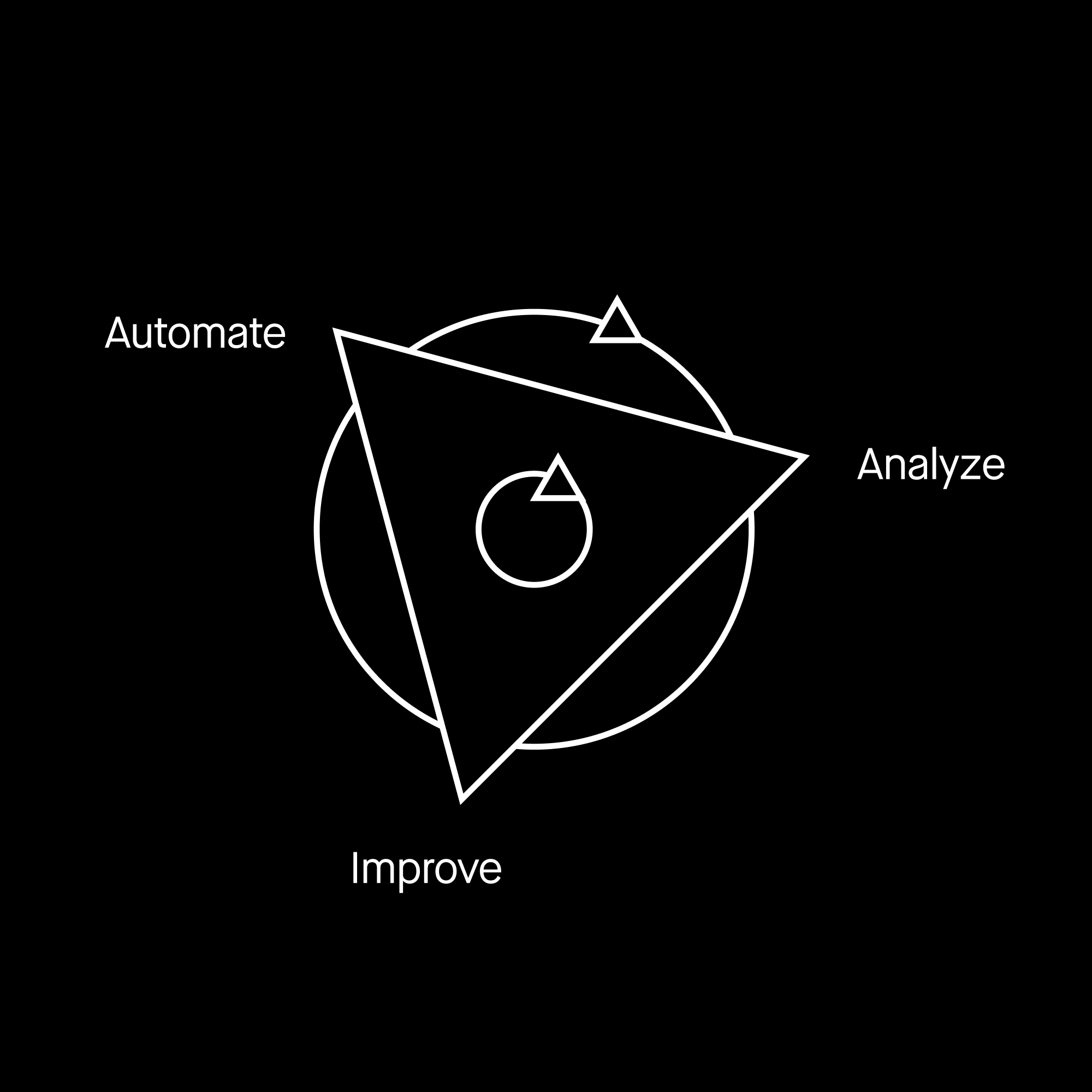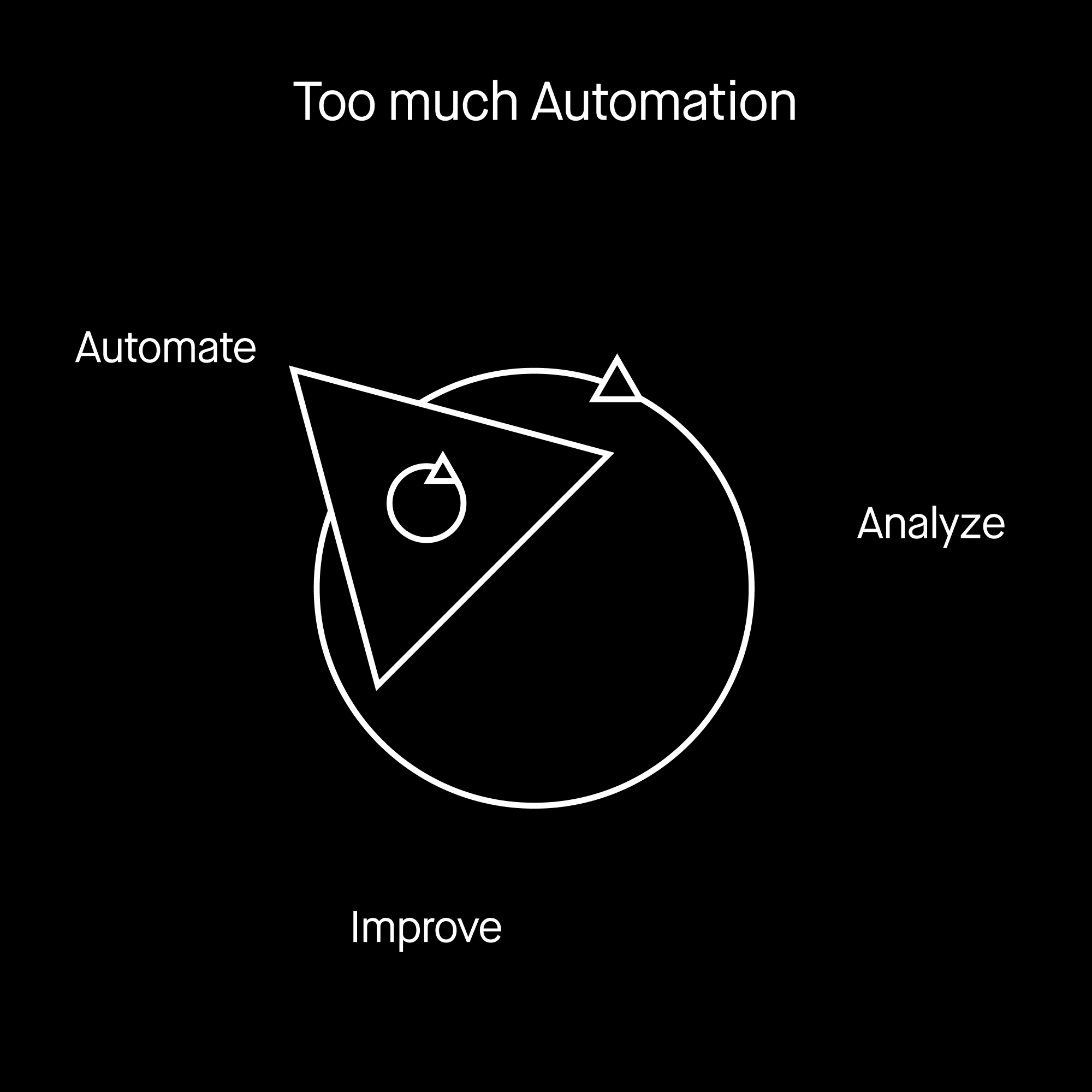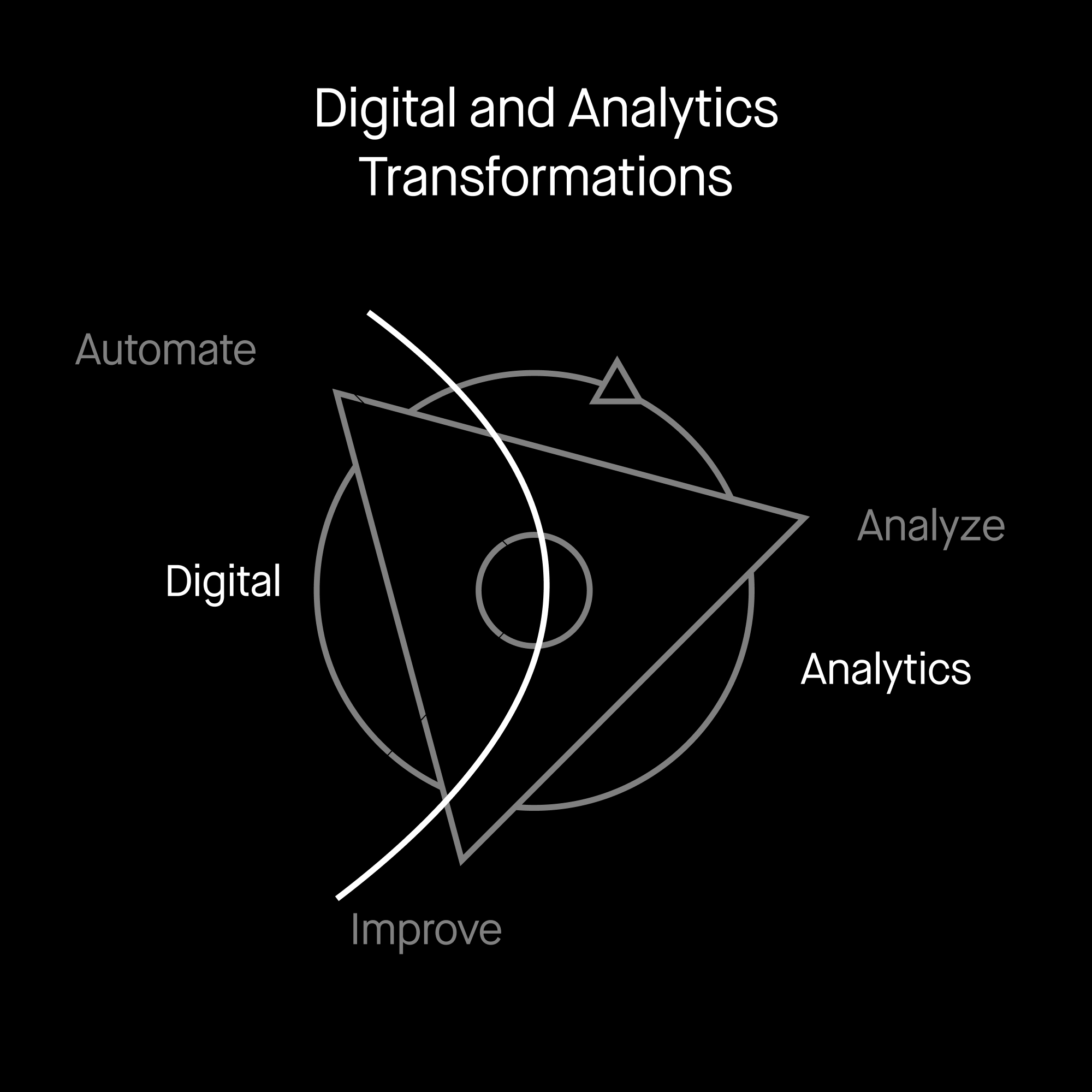In 2021, a McKinsey study found that 69% of digital transformation projects fail.
Surprising…or maybe not. While the number of failures is significant, digital transformation is a long, arduous process. Many organisations adopt new technologies to automate workflows and call it a day. While that can help save time, it doesn’t magically transform an organisation into a data-driven tech operation.
Digital transformation isn’t one step and done. It consists of three continuous steps that depend on feedback from one another to work. If one step breaks, the entire transformation falters. These three steps are:
- Automate
- Analyze
- Improve
When your organisation can move from automation to analysis, through to improvement, and then to automation again, you get a successful digital transformation.
We call this the transformation flywheel.
The transformation flywheel
A digital transformation enables you to collect data about the process you digitise. You want some improvement from the data you collect: To increase profit, improve efficiencies, or delight more customers.
This improvement only happens with repeated turns of the transformation flywheel.

The transformation flywheel is a familiar feedback loop. In logistics, it’s called an operating mechanism. In operations management, it’s the DMAIC process. The military strategist John Boyd called the decision-making process the OODA loop.
In the digital world, this “transformation flywheel” consists of three stages mentioned above (automate, analyze, and improve).
Automation is an easy first step. Your team will automate something in your organization via software solutions (integrations or custom apps). And, of course, this software creates data about the processes they automate.
In the analyze phase, the newly-collected data measures the newly-automated process. Data engineers, data analysts, and sometimes, data scientists support this piece of the puzzle.
The improve part of the wheel uses analysis to determine where the automation phase should focus its attention next. Improvements might affect the user interface, employee retention, or integrations with better data. As the analyzed evidence piles up, product managers, data scientists, and data analysts work together to identify and track improvement to ensure the next automate phase is productive.
The missing piece of the flywheel in digital transformation
A flywheel “flies” because there’s evenly-distributed weight to power the system. But what we’ve seen over the past few years is this:

Organisations get stuck in the automation phase, with the best software teams but no investment in the “analyze” or “improve” phases. They get data, but it doesn’t go anywhere. The flywheel gets stuck on automate.
Since you don’t know what needs improvement, the automation teams keep automating and collecting more data for no strategic reason.
The analytics transformation
The missing component to this evolution is usually an analytics transformation.
An analytics transformation starts with analyzing the data collected by the newly-automated process. Then you decide what would make the new process effective for customers, employees, and shareholders. Finally, you modify your software to implement that improvement before starting the process over again.
To work, your analytics transformation requires a strong relationship with your automation and improvement phases. For example, it’s likely your apps aren’t collecting all the data you need. So you need to work with your engineering team to ensure certain data collection is developed.
Luckily over the last few years, data warehousing has undergone its own digital transformation. DataOps offers a way to organize the rest of the flywheel. Using DataOps to manage tools has enormously impacted the reliability of data warehouses and their timelines.
With DataOps, your analytics transformation has the same level of predictability as a digital transformation. And if we look at the flywheel’s division of labor, that work is substantial.

In practice, everything to the right of the white line on the flywheel diagram is an analytics transformation. It needs proficient DataOps teams, including data scientists, data engineers, and data modelers.
Everything to the left of the white line is a digital transformation and needs software engineering and product teams.
Don’t spin without traction
Many transformation efforts spin for years and never get traction. An organisation tries to become data-driven, but efforts stall because they can’t measure user impacts or capture data about user workflows–or because the data never gets integrated at all.
The transformation flywheel needs to work together before you realise continuous improvement. Digital transformation gets you automated, but if you don’t follow with an analytics transformation, you won’t be able to analyze or improve. Balance your investments across the flywheel, and remember everything needs an initial push to keep things running smoothly.
Questions on data analytics?
Director of Data, CRO & Insights





